
Purple lilac: the best varieties
7 varieties with purple flowering for all tastes
Contents
Lilac (Syringa) is an essential shrub, particularly in romantic-style gardens. With, an abundant and fragrant flowering in April and May. Emblematic of spring, its colour palette is very extensive – ranging from white to purple, including pink, mauve, and violet. Discover our selection of 7 lilacs with purple flowering.
Lilac 'Président Grevy', featuring a flowering violet that leans towards cobalt blue
The ‘Président Grevy’ lilac is a cultivar with unparalleled flowering and a sweet fragrance, perfect for creating beautiful romantic bouquets.
This deciduous bush can reach up to 4 m in height and is adorned in spring with heart-shaped leaves that start off a fresh green, which will turn medium green as the season progresses.
In April and May, this rounded lilac showcases panicles of double flowers that are abundant and highly fragrant, with floral buds that are purple before the cobalt blue flowers bloom. You can thus achieve different bouquet shades depending on the flowering stage at the time of harvesting.
Thanks to its excellent hardiness and great tolerance regarding soil, this easy-to-grow bush will find its place in any type of garden. However, it will prefer a good sunny exposure. It will look stunning in a shrub border, accompanied by lilacs in complementary colours, such as white or pink, or by cotinus – the smoke tree.
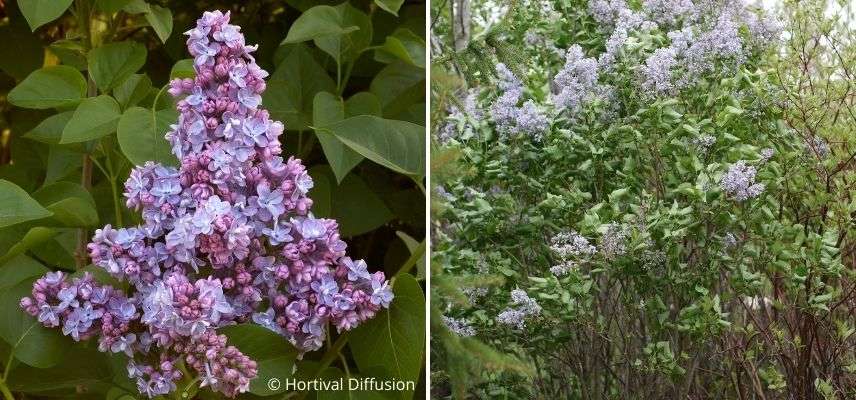
Syringa vulgaris ‘Président Grevy’ (Photo by Fd Richards)
Lilac 'Charles Joly', intensity of colour and fragrance
The ‘Charles Joly’ lilac stands out for its intensity, whether in the colour of its flowers or its fragrance.
Typical of old gardens, this deciduous bush reaches a height of 5.5m and has a bushy habit. It is an old cultivar developed by Victor Lemoine, a horticulturist known for creating several dozen cultivars of Syringa vulgaris in the 19th century. Its heart-shaped leaves are a fresh green in spring, before turning to a medium green later on.
The flower panicles are very dense and double, displaying an intense violet that will add colour to the garden. The flowers exude a sweet fragrance in spring, typical of lilacs, and are wonderful in bouquets where they can be combined with irises. Additionally, by regularly cutting off the faded flowers, you will encourage a small second flowering at the end of summer.
In the garden, this bush, which enjoys a sunny or semi-shaded position, can be planted in shrub borders, as a hedge, or even as a solitary specimen. It brings a romantic and old-world touch typical of English gardens.
Moreover, it is an excellent bush in a natural garden, where it will be visited by butterflies, bees, and other pollinators due to its melliferous character.
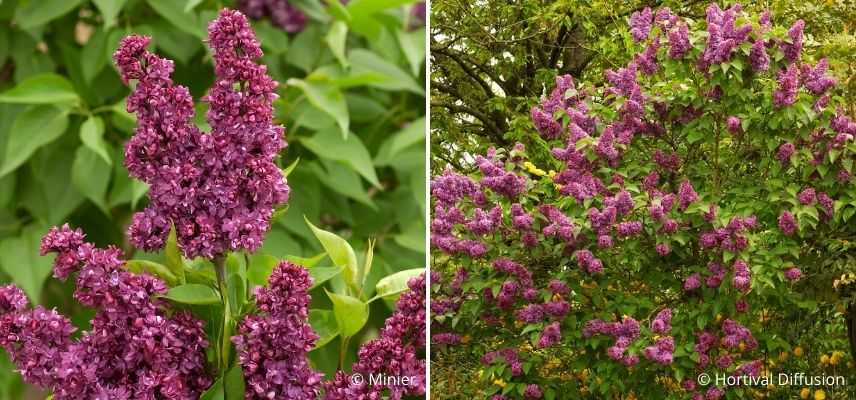
Syringa vulgaris ‘Charles Joly’
Discover other Syringa - Lilac
View all →Available in 2 sizes
Available in 0 sizes
Available in 0 sizes
Available in 1 sizes
Available in 1 sizes
Available in 2 sizes
Available in 0 sizes
Available in 1 sizes
Available in 0 sizes
Available in 1 sizes
'Prince Wolkonsky' lilac, a large bush with abundant and sweet flowering
The ‘Prince Wolkonsky’ lilac is another deciduous lilac with heart-shaped leaves that frame the panicles of purple flowers that bloom in spring. The purple-red flower buds add intensity to the overall appearance.
With a rounded habit, it is a lilac that can grow relatively tall, reaching up to 7 m.
This lilac, easy to grow – like most lilacs – prefers sunny locations to produce abundant flowering in April and May. Its flowers are double and highly fragrant, making it an ideal candidate for spring bouquets that will bring a fresh and sweet touch to the home.
The flowering of this lilac will be enhanced by the blooming of lilacs with lighter colours – mauves or whites. You will then create joyful and divinely scented clusters where it will be pleasant to linger.
You can also choose to plant it alongside a forsythia or a mock orange to extend the flowering and fragrances.
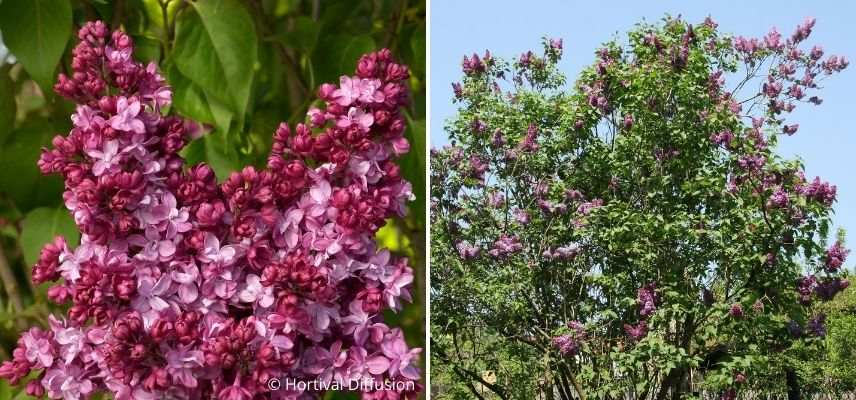
Syringa vulgaris ‘Prince Wolkonsky’
Lilac 'Souvenir de Louis Spaeth'
The lilac ‘Souvenir de Louis Spaeth’ is an old variety developed in the 19th century in Germany.
Its flowering occurs around May to June, slightly later than the varieties mentioned above. The leafy branches of this relatively small deciduous bush (3.5m high and 1.5m wide) become covered with panicles of intensely dark purple flowers.
These double, highly fragrant flowers, with their delightfully sweet scent, are perfect for creating spring bouquets.
The lilac ‘Souvenir de Louis Spaeth’ pairs beautifully with the other colours of common lilacs, which can highlight the intensity of its colour in a shrub border. It can also be associated with mock orange or smokebush.
It goes without saying that this variety, although old, has its place in all types of gardens. Plant it near your terrace or a bench to fully enjoy its subtle fragrance and vibrant purple colour.
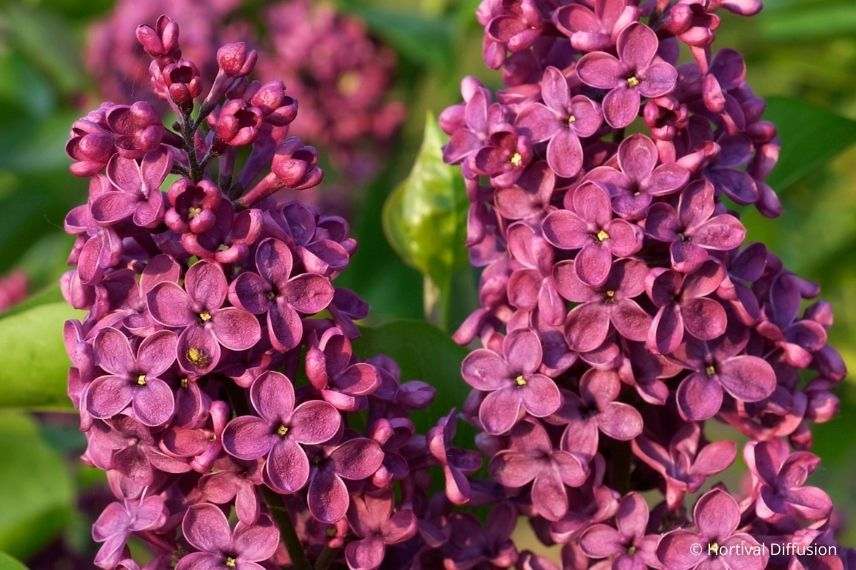
Syringa vulgaris ‘Souvenir de Louis Spaeth’
'Sensation' lilac, a sophisticated bicoloured flowering.
The main feature of the lilac ‘Sensation’ is its bicoloured flowering, a rare trait among lilacs. The petals of the small flowers are purple with a white edge that enhances the colour of the centre, giving them a sophisticated appearance compared to other common lilacs.
In addition to this original colour, the flowers have a fragrance that will delight anyone standing nearby. They are therefore quite suitable for bouquet arrangements.
Easy to care for, this lilac tolerates most soils and, thanks to its great hardiness, can be planted in most regions of France. It prefers sunny locations.
This deciduous bush has a relatively upright habit and can reach a height of 4 m, making it best planted alone to showcase its flowering in April and May. Even though once the flowers have faded, it falls back into anonymity. Plan for a flowering bed to take over, with hardy geraniums, for example.
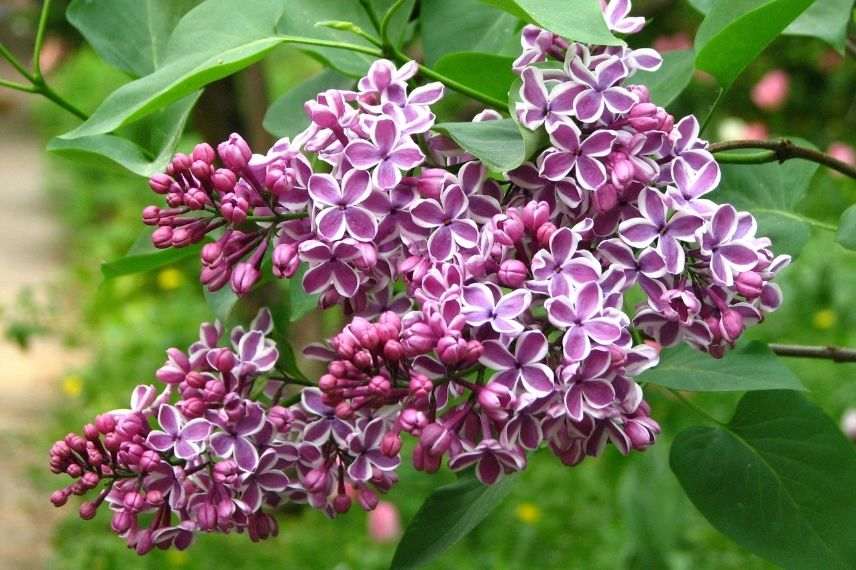
Syringa vulgaris ‘Sensation’ (Photo Wikipedia)
The Bloomerang 'Dark Purple' lilac, a compact and perpetual lilac
Here is a lilac that is a bit different, part of the Bloomerang series, which is a recent creation, unlike the Syringa vulgaris we discussed earlier.
The Bloomerang ‘Dark Purple’ lilac is much smaller than its cousins, resembling a large bush with a very natural appearance, reaching 1.5m in height and approximately the same width. The deciduous leaves are also smaller than those of the common lilac.
However, it retains its lineage with Syringa in terms of flowering. Small flowers in purplish tones are indeed grouped in inflorescences resembling panicles. They are also highly fragrant.
A significant advantage of this lilac is its very perpetual flowering, which continues from spring until late summer.
Moreover, its small size is perfectly suited for planting in a small garden, where it will provide a sweet fragrance and attract numerous pollinating insects.
Like most other lilacs, it is also very hardy and, therefore, suitable for most regions in France.

Syringa ‘Bloomerang Dark Purple’
Persian lilac, a blue-violet lilac with delicate foliage and flowers.
The Persian lilac, or Syringa persica ‘Laciniata’, is sometimes referred to as parsley-leaved lilac due to its finely dissected deciduous leaves, which are quite remarkable within the Syringa family.
The Persian lilac has a bushy and light habit that gives it a charmingly natural appearance. It reaches a height of no more than 1.5m and a width of 2m, making it an ideal candidate to grow in small gardens, and even in pots.
The flowers are arranged in fairly airy pyramidal inflorescences compared to other lilacs. In pale mauve tones and with its delicate fragrance, it is a plant to install in the garden without hesitation.
Moreover, it is very frost-resistant. It simply requires a good sunny exposure and well-draining soil to thrive.
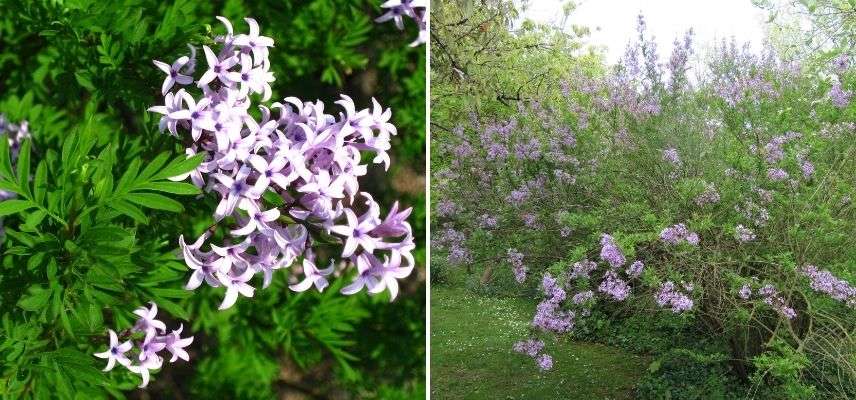
Syringa persica ‘Laciniata’ (Photo by L. Enking)
- Subscribe!
- Contents
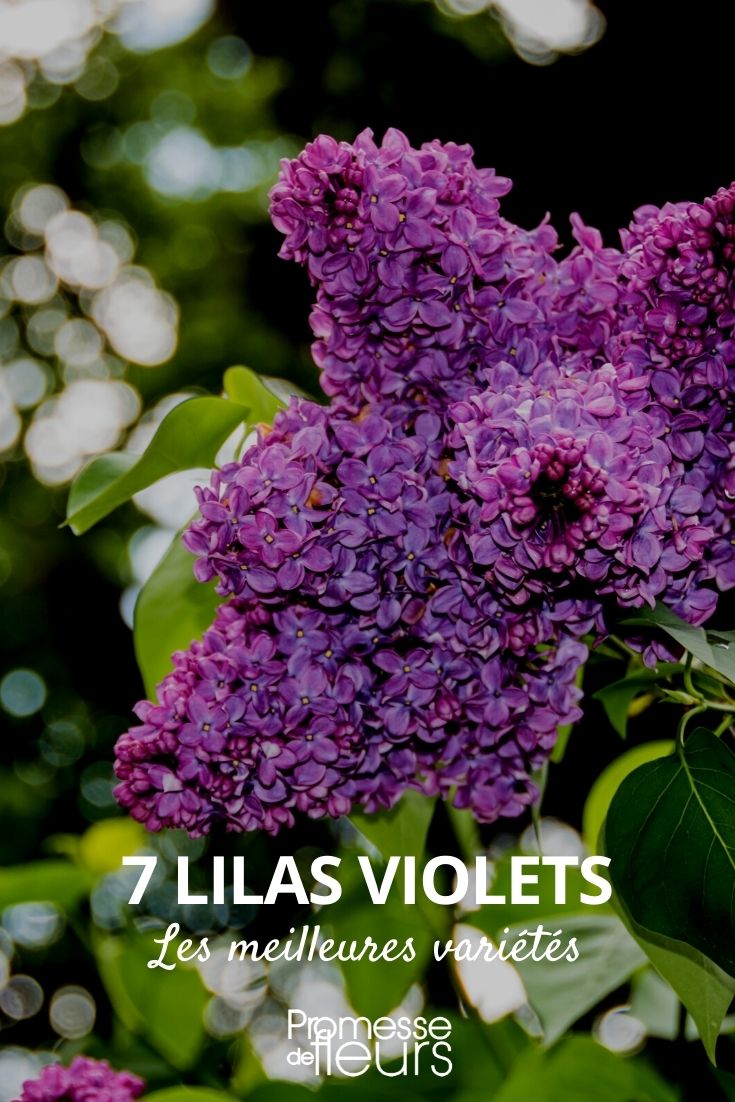































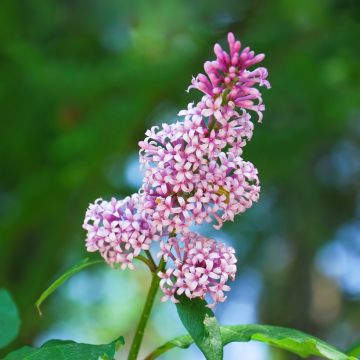

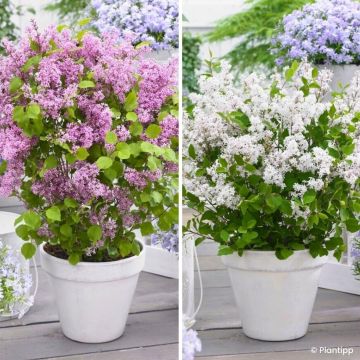
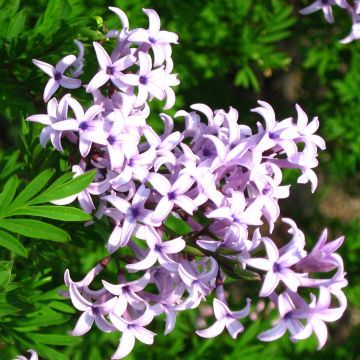

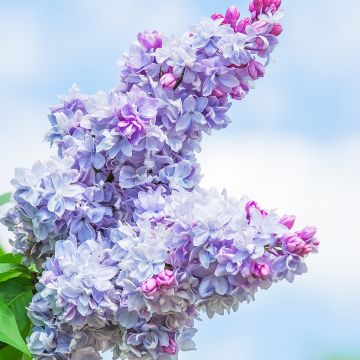
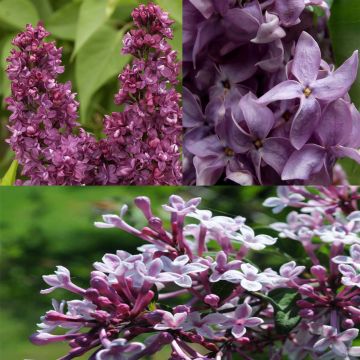
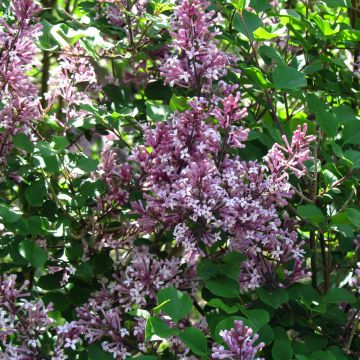
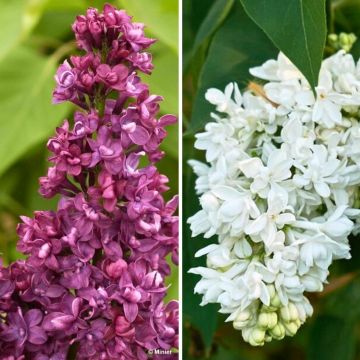

Comments